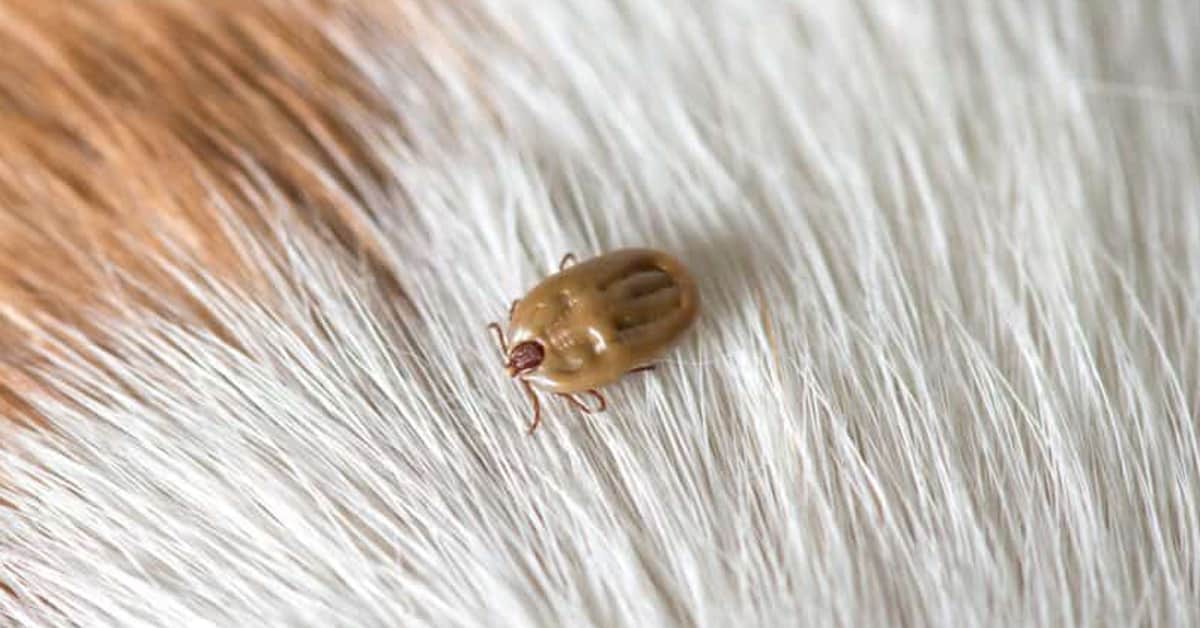Dried Dead Tick On Dog
Ticks can cause serious health problems, and finding them on a dog can be both alarming and disgusting. Depending on where you live, there can be more ticks in the area or less. Ticks can be active all year round, but they often come out in the warmer months.
Did you find a dried dead tick on dog and do not know what to do? You are reading the right article. Here, we will discuss what you will have to do when you find a dried dead tick on dog.
What Is Tick?
Finding a dried dead tick on dog can be pretty nasty, and most people are disgusted with it. However, finding a dead tick can be less alarming than finding a live one that is still sucking blood.
Therefore, they present less threat to the animals. Eventually, this does not mean that there is no need to worry. Those ones have to be carefully removed too. Before discussing how to remove the dried dead tick on dog, let’s learn more about what ticks are and what they can do.
Ticks are parasitic creatures that belong to the Parasitiformes superorder of mites. Ticks can range in length from 3 to 5 mm as adults, depending on their age, sex, species, and degree of “fullness.” Ticks are external parasites and blood-feeders that live off the blood of mammals, birds, and occasionally reptiles and amphibians.
It is crucial to know whether the bump is really a tick or not. If you do not know what a tick looks like, it can be mistaken for skin tags and moles. When touched, the ticks are smooth when they haven’t had a chance to eat. They are either black or brown or shining silvery-white. So only the mouthpiece is linked to the skin, so when pushed, the body should move on its own.
How To Know If The Teak Is Dead Or Alive?
Even while a tick can appear to be dead on the dog’s skin, it’s crucial to double-check to make sure. Check the tick attentively to determine whether it moves the legs or not. If you see any movement, then it means that the tick is still alive and is in the feeding process. However, if the tick does not move, it may not be an indication that the tick is dead.
Examining the placement of a tick’s legs is another approach to determining if it is dead. They are probably dead if they are rigid and coiled up rather than sticking out to the sides.
Can a Dead Tick Still Be Attached?
Yes, the dead tick can still be attached to the dog. This is partially caused by ticks’ mouthpieces, which are made to latch securely into the skin when the tick first starts to feed. Their mouthpieces can keep a tick stuck to a dog’s skin even after it dies, for whatever reason, even while the tick’s body shrivels and contracts.
In contrast to when it was living, a tick that dies on your dog’s skin may actually be harder to remove from the skin. This is due to the fact that when it died, it had not yet taken in enough blood to release its hold and let go naturally. As an alternative, the tick will be more contracted, which will increase how tightly it adheres to the skin.
In some cases, if the tick has fallen or been manually removed, there is still a chance that its head is still attached to the dog’s skin. So, in this case, you will have to carefully check and make sure there are no parts of the tick’s body remaining attached.
What To Do When Finding A Dried Dead Tick On Dog
First of all, when you find a dried dead tick on dog, there is no need to panic. The good news is that getting rid of dead ticks is very much the same as getting rid of live ones! Therefore, if you have experience removing live ticks from your dog, just follow the same procedure when you come upon a dead bloodsucker.
Removing a dead tick is just as vital as removing a live one. Even though dead ticks are less dangerous, if they are left entrenched in the skin, they can still result in a variety of surface rashes and inflammation.
Don’t worry if you’ve never had to remove a tick from a dog before. Follow the guidelines and instructions provided by us, and everything will be fine. In order to remove the dead dried tick on the dog, you will need:
- Gloves most importantly
- Special tick removal tool. However, if you do not have one, you can use point-ended tweezers.
- Rubbing alcohol and soap
- Paper towel
- Small Ziploc bag (or something to put a removed tick inside)
How To Remove The Dried Dead Tick On Dog?
Step 1: Identify The Tick
Finding the tick or ticks is certainly the first thing you should do. Ticks may be found almost everywhere on a dog’s body, although they can be particularly difficult to spot in areas with thick fur. Ticks can be as small as 1 mm to 1 cm. When touched, the bump will feel spherical and firm. Also, the tick has 6-8 legs, which can be seen in some cases. It comes in black or brown, and when engorged, it gets a silvery-white color.
Step 2: Remove The Dead Tick
Keep the fur apart so the tick is clearly visible. Use a fine, pointed pair of tweezers to firmly grab the tick’s body as close to the dog’s skin as you can before removing it. When the tick separates, gently pull it upward and away from the skin.
This process might take some time, depending on how firmly the tick is attached. Be aware that it is typical for a tiny bit of skin to come off along with the tick; this is a natural part of the procedure, so do not be concerned.
Despite the fact that the tick is already dead, it is crucial to avoid pinching, squeezing, or squashing it with your tweezers because this might lead to needless danger. By doing so, you will expose the diseases or bacteria that the tick may have.
You can either take the tick to a lab for testing or keep it at home. You can do it by wrapping the parasite in a paper towel and placing it in a plastic bag. If you do not want to test it, the dead tick can be disposed of in any way you are comfortable with, as long as it is hygienic.
Step 3: Clean and Sanitize The Area
Even if the tick is dead and you remove it carefully, the bacteria can still be transmitted to the skin, which can cause infection. Therefore, it is important to disinfect the area where the parasite was.
Thoroughly clean the wound and its surroundings. You can use soap to clean and rubbing alcohol for sanitation. You may also apply antiseptic ointments to the bite site if it appears to be a little uncomfortable and swollen in order to help the wound heal and stay clean. After the operation, remember to thoroughly clean and wash your hands as well as the tweezers!
Why Is The Tick That Is Attached To The Dog Dead?
It seems sensible that a tick that has become lodged in a dog’s skin wouldn’t naturally be dead. Ticks often eat for hours, if not days, only stopping after they have absorbed enough blood to breed and reproduce. A tick might, however, die while remaining attached to a dog under some circumstances.
The most frequent reason is that if you give your dog flea preventative or regular medication, it will eventually kill the tick. So, if you give the medicine to your dog often, then it will not be uncommon for you to find the dried dead tick on dog’s body.
Another reason why the tick may have died while still attached to the skin may be that the dog may have scratched the area where the tick was located and killed it physically.
Is a Dried Dead Tick On Dog Dangerous?
Small, flat ticks pose no threat, even while they are still living. Dead or living, infected engorged ticks are harmful if they have had enough time to transmit the disease to the dog. A tick gorges itself in 1.5–3 days. Depending on the infection, it may take as little as 24 to 48 hours after attachment for the pathogen to spread to its host.
The diseases that ticks can give to your dogs are:
- Lyme disease is also known as borreliosis.
- Anaplasmosis
- Babesiosis
- Rocky Mountain Spotted Fever
- Ehrlichiosis
Bottom Line
If you spot a dried dead tick on dog, first make sure that it is really dead. Then you can remove it with the same steps as you would remove the live one. Even if the tick is dead, its mouthparts may be tightly attached to the skin. The dead tick is far less dangerous than the living tick. However, you will still need to be careful and can remove it by following the steps explained above.
On the other hand, a dried dead tick on a dog will no longer spread the disease in the body. Nevertheless, you will still need to observe if the symptoms like lameness, lethargy, appetite loss, vomiting, fever, or diarrhea appear in your dog’s behavior. Then you definitely have to go to the vet for an examination.

Nato is a content writer and researcher with a background in psychology who’s eager to explore the wonders of nature. As a travel enthusiast and animal lover, she hopes to inspire others to discover and cherish the beauty and importance of the natural world.







